Gothic Mexico City! Brujas witch bar, Mexican top fine dining restaurants, Anahuacalli Museum death gods & skulls.
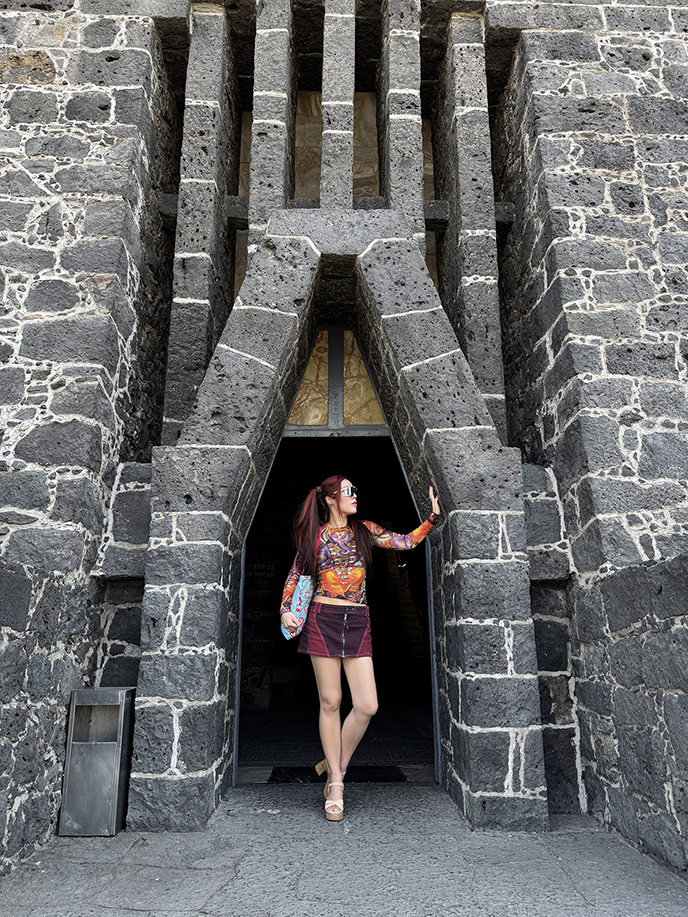
Mexico City, the site of sugar skulls and death gods… Of course I felt right at home in the Mexican capital, and always love coming back for more!
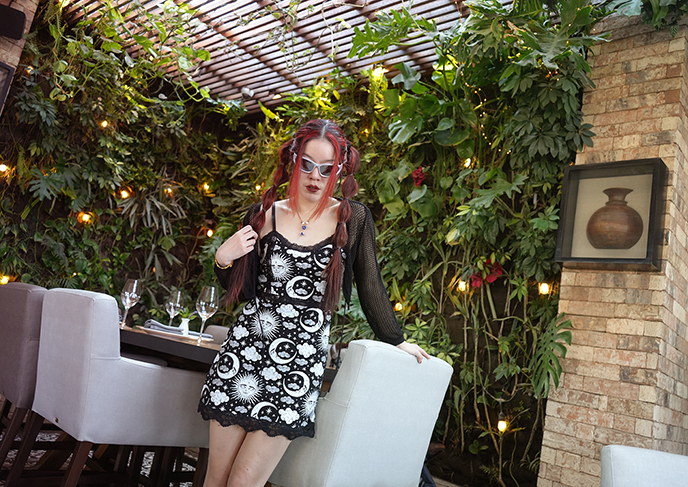
This time around, I focused on CDMX’s innovative, world class restaurants and bars — along with excursions to the Aztec underworld. Read on for my Mexico City culinary and cocktail recommendations, including a World’s 50 Best bar run by witches. (Above, I was thrilled to return to Balcon del Zocalo in Centro Historico for Chef Pepe Salinas’ latest tasting menu.)

This was my third visit to Mexico City, and I’m already planning a comeback!
This time, I descended into the underworld of a lesser-known museum… Diego Rivera’s Museo Anahuacalli Museum. Let me tell you, it’s one of the most impressive art / architecture sites I’ve ever visited.
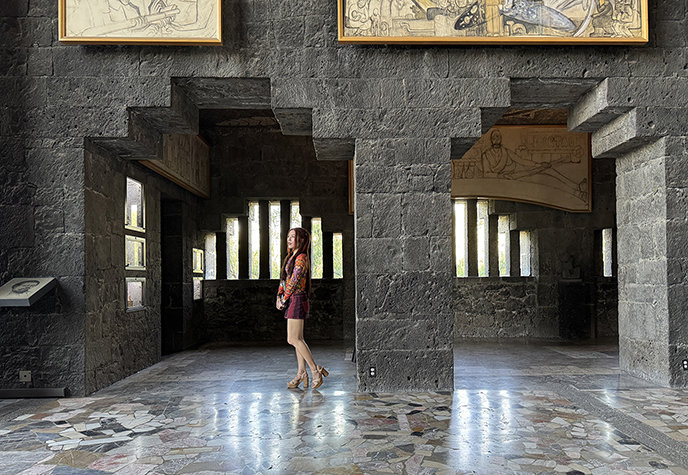
Located in Coyoacán, Anahuacalli is a masterpiece of mid-century organic meets Mesoamerican architecture, and filled with Diego Rivera’s collections of mysterious pre-Hispanic art. Watch the video of my visit to see why I was mesmerized.
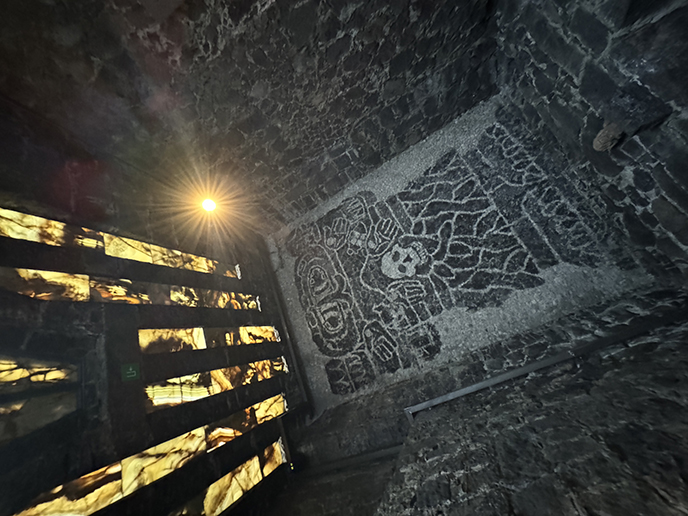
The structure has three floors that represent the underworld, human, and celestial realms.
Of course, I vibed most with the dark, tomb-like hell level with snake and skull ceiling mosaics, and a sacrificial altar!
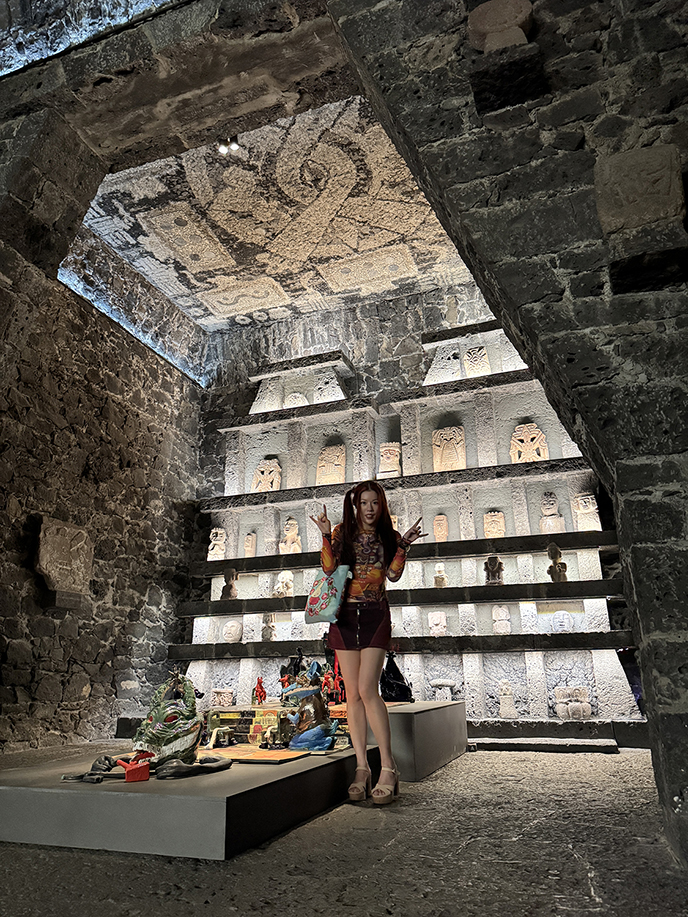
I’m standing in front of an altar with a ceramic frog undergoing the Aztec ritual of heart extraction (Rivera’s wife, artist Frida Kahlo, nicknamed him “Frog” because of his amphibitian looks). Surrounded by spooky skulls, snakes and death gods… I wouldn’t mind staying in Anahuacalli Museum’s Mesoamerican underworld.
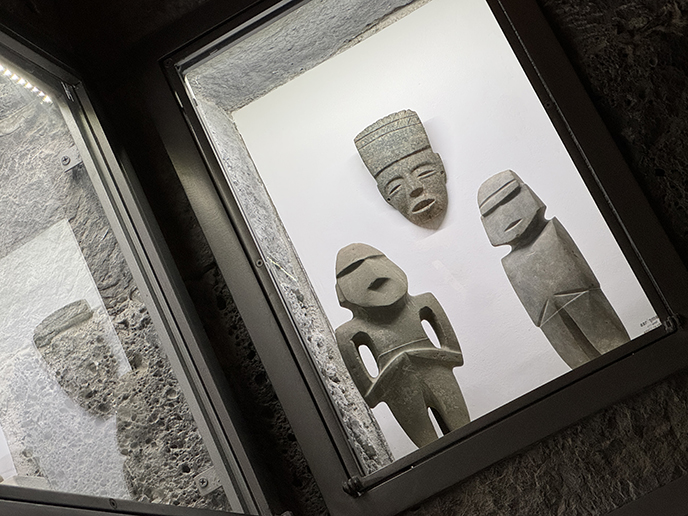
Diego Rivera began construction on Anahuacalli in 1942, and the building was not completed until after his death. None of the objects have display cards explaining the years, origins, etc — he wanted visitors to simply “vibe” with the mysterious works from various regions of Mexico. (These ones caught my attention as they reminded me of Easter Island moai.)
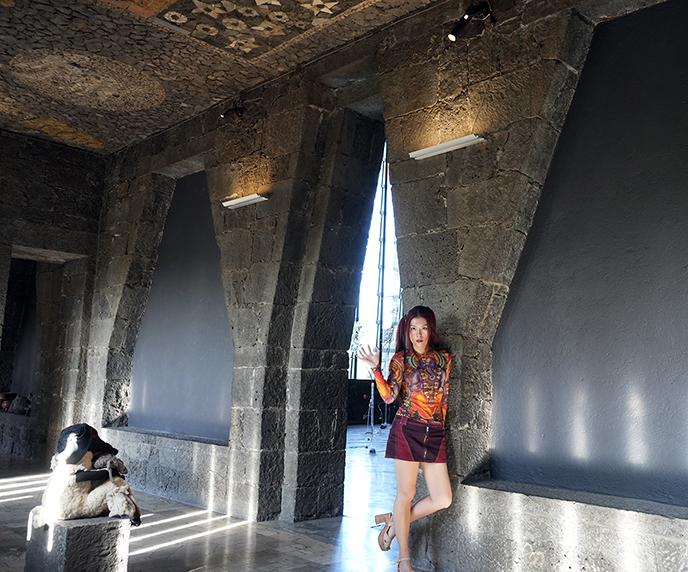
Anahuacalli is a love letter to Aztec and Mayan imagery, as well as Frank Lloyd Wright-ian mid century organic architecture. There’s nothing “mid” about his bold design choices — the walls are made from rock from the eruption of the nearby Xitle volcano.
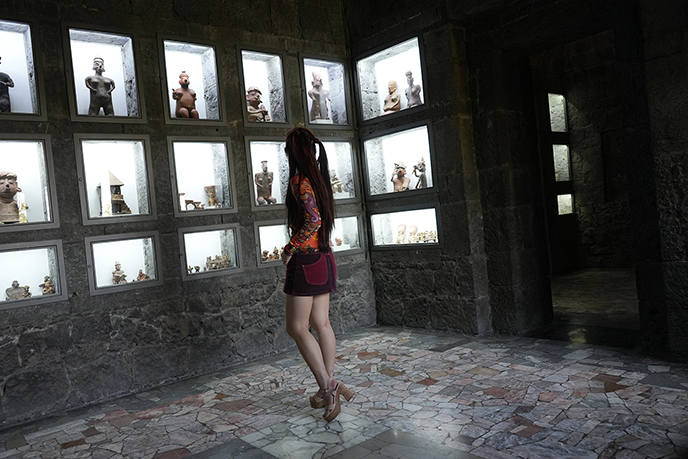
Diego Rivera masterfully used natural light, volcanic stone and ancient forms to showcase his massive, beloved collection of pre-Hispanic artifacts.
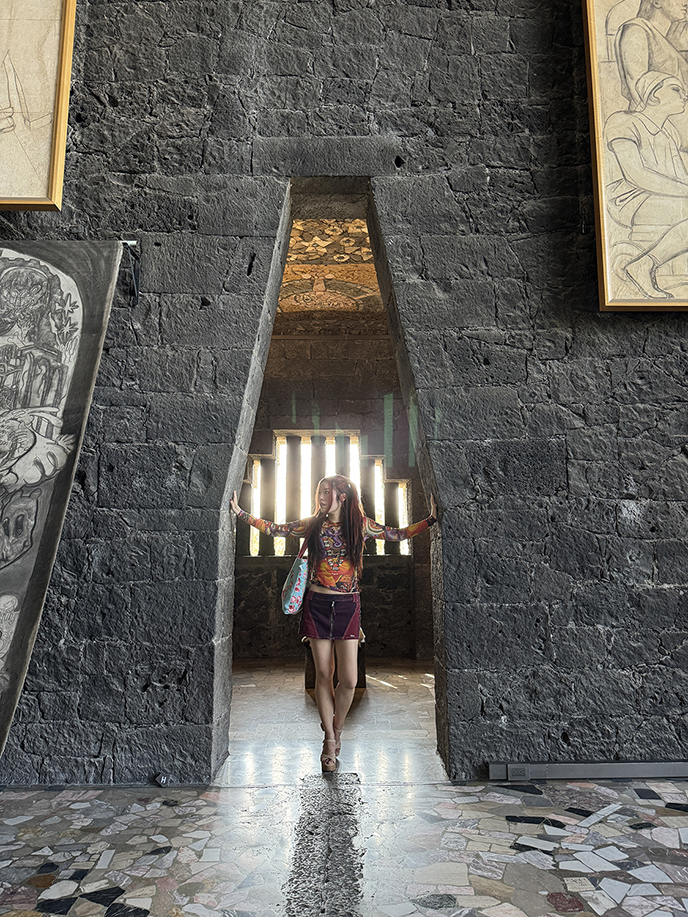
The sloped arches and rhomboid doors had my heart. (The shapes remind me of the office in the comedy TV show “The Studio.”)

Anahuacalli does a brilliant job at mixing modern media exhibits with ancient artwork. A stuffed demon chomps on a creature in one room, while serpent deity Quetzalcóatl and the god of fire Xólotl gaze upon a Goth drag queen video.
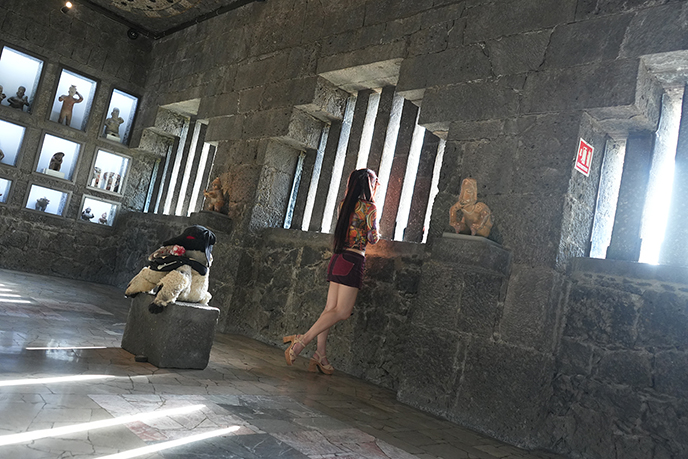
If you have a Gothic disposition and a fascination with the old gods, Anahuacalli Museum in Coyoacán is not to be missed!
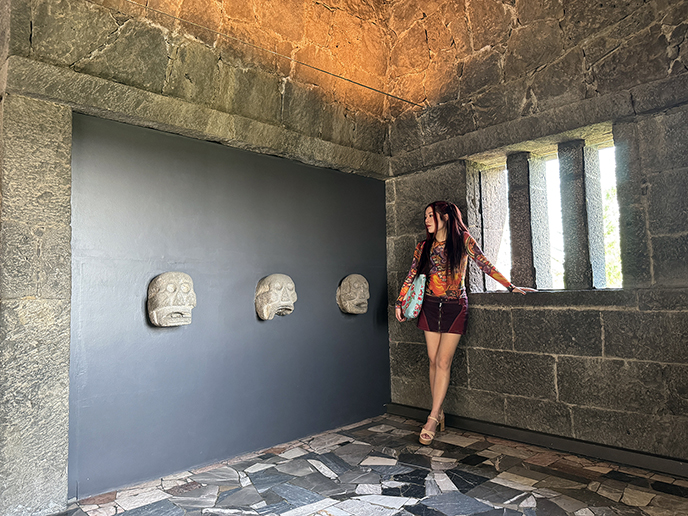
Making friends with this row of spooky skulls, which are a regular motif in Indigenous Mexican art and represent both life and death. See the video of my museum visit for more.
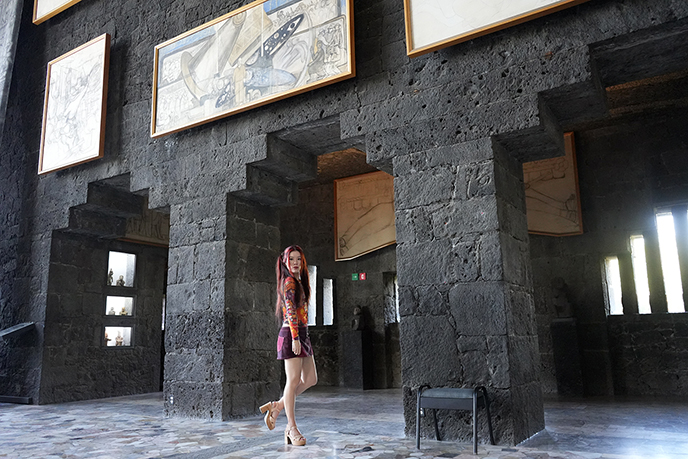
Diego Rivera is best known as a muralist, but I was impressed by his skill as an architect. This first floor functioned as his personal workspace and showcases his large-scale Cubist and Post-Impressionist style art.
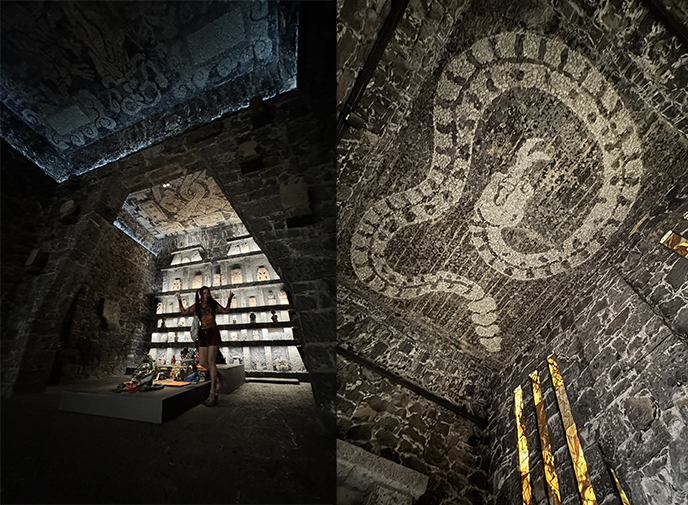
There’s a rooftop terrace as well with sweeping views of the surroundings — but I liked the dim, hellish underworld best!
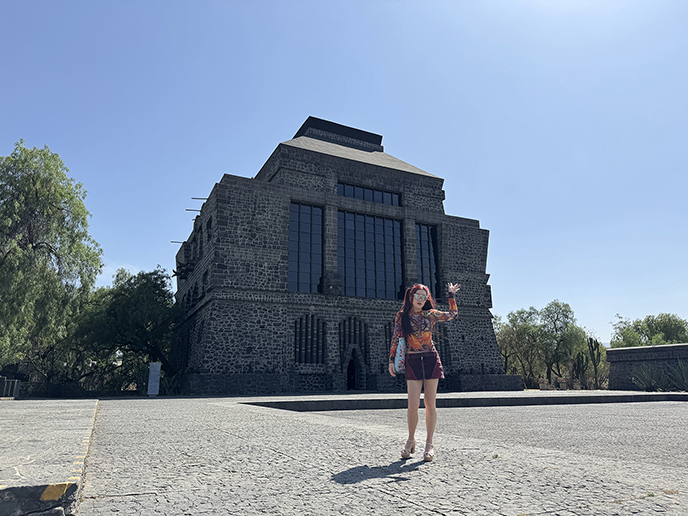
Anahuacalli Museum in CDMX is a must for anyone obsessed with archaeology and mysterious death cultures like I am. Enjoy the reel of my museum tour for more info.

Speaking of impressive spaces… Size isn’t everything but man, did I love my elephantine Master Suite with a balcony at Marquis Reforma Hotel and Spa, Mexico City!
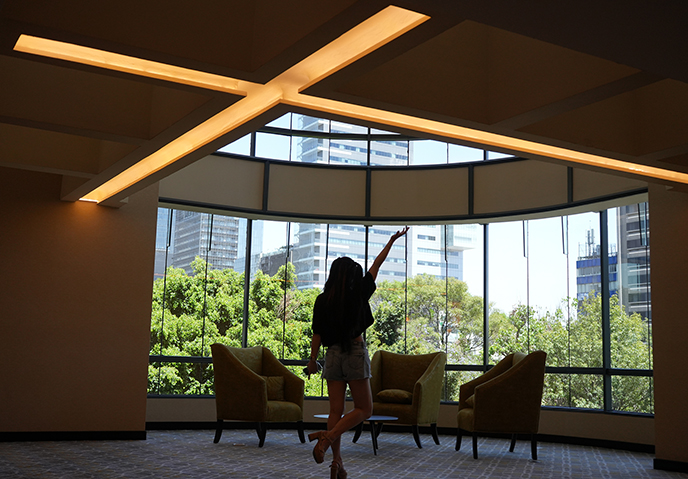
Marquis Reforma Hotel and Spa is CDMX’s only Leading Hotel of the World, and lives up to its designation. Watch my video of my royal stay here.
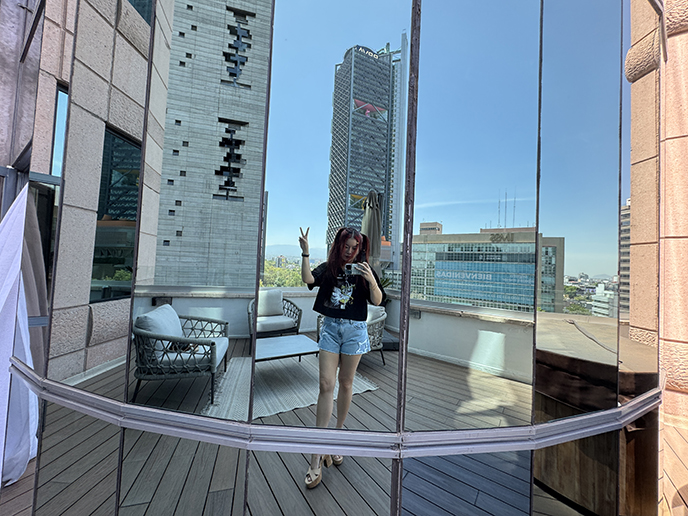
I luxuriated in my 775 sq ft suite with patio views of Reforma Avenue, Chapultepec Castle and the Independence Angel. There’s plenty of room for friends here… who wants to crash with me at Marquis Hotel?
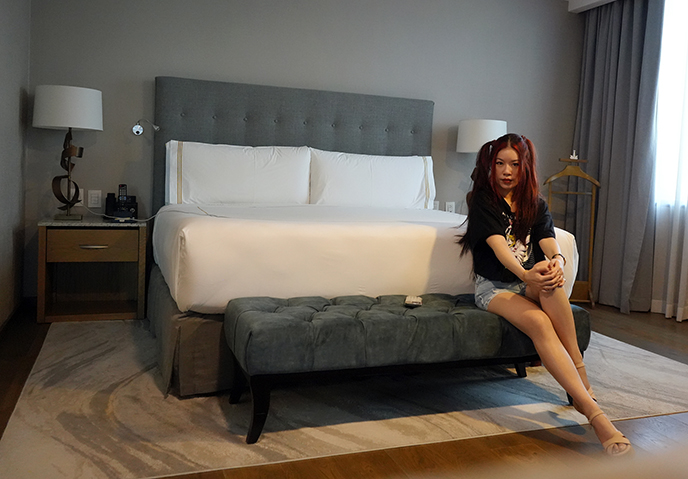
Feeling like a marquise at Hotel Marquis Reforma — check out this plush bed. The location in Roma/Condesa also can’t be beat.
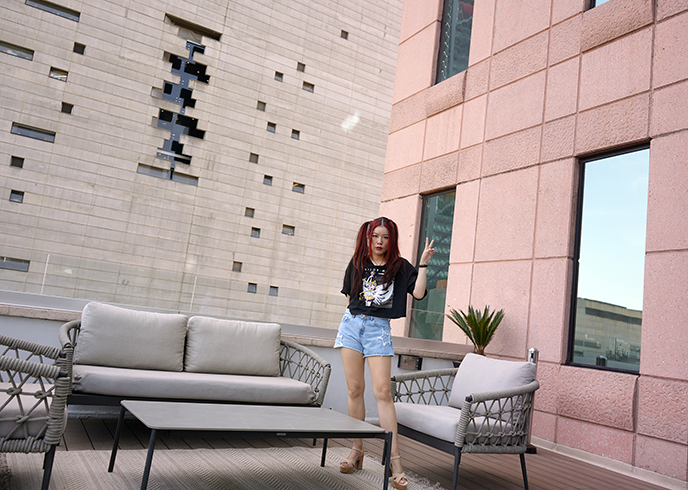
Highlights: the spa and pool, and my gargantuan patio overlooking the stately Paseo de la Reforma.
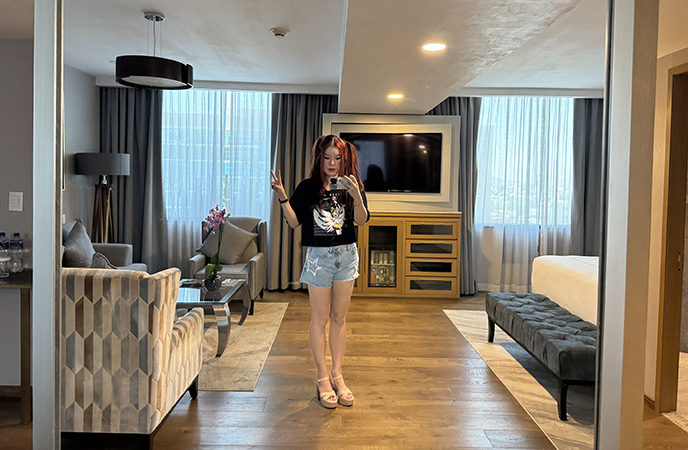
A curtsey to Marquis Reforma Hotel and Spa for a royal stay to remember! (I got these Y2K star shorts while in Mexico City for $13.)
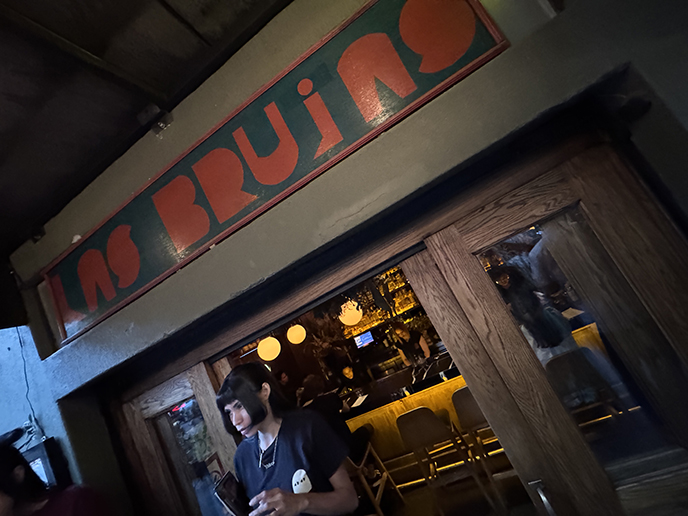
And now, let’s hop to Goth-friendly bars around Mexico City. My favorite is Las Brujas, ranked on North America’s 50 Best Bars list. Inside the gothic (and possibly haunted) Casa de las Brujas, an all-women coven crafts drinks inspired by herbal healing and the witches that came before them!
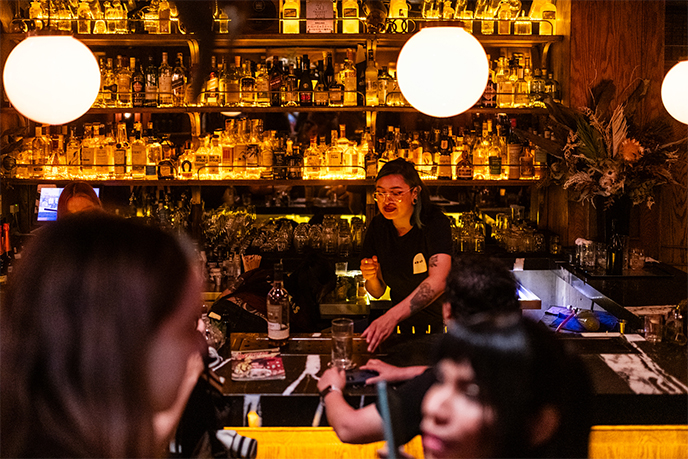
(The following series of bar and restaurant photos are by Rey Lopez.) The drinks are based on Mexican witchcraft and traditional healing practices — and made by brujas with tattoos, dyed hair and dark makeup.
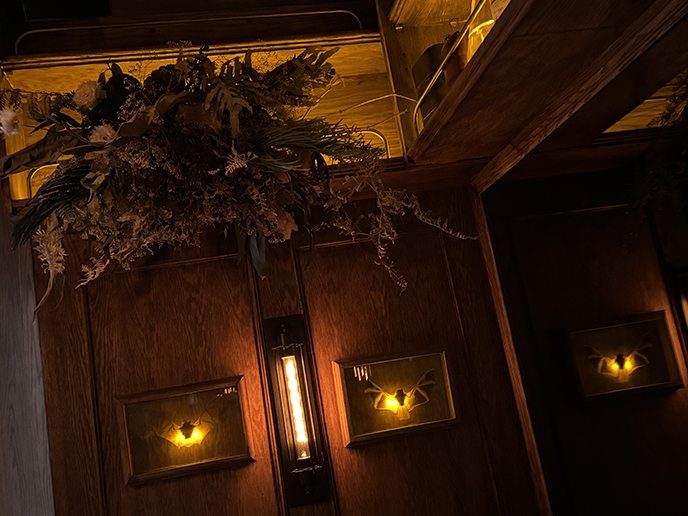
At Brujas, you’ll notice taxidermy bats, Ouija boards and other demonic decor throughout.
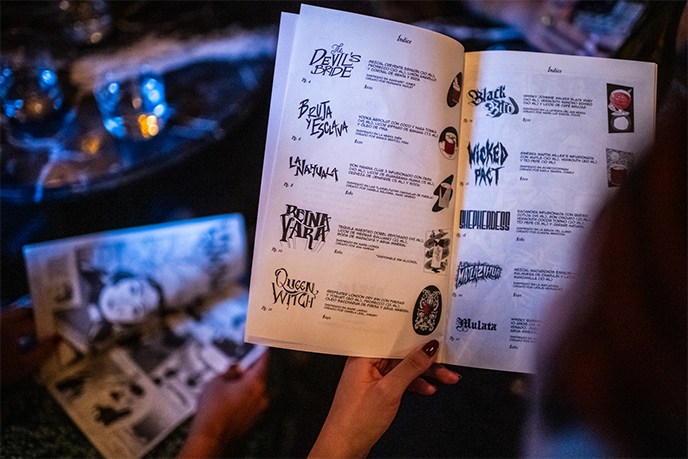
The cocktails are dark magic concoctions with names like The Devil’s Bride, Queen Witch, Wicked Pact. They’re among the most creative drinks I’ve had in CDMX.
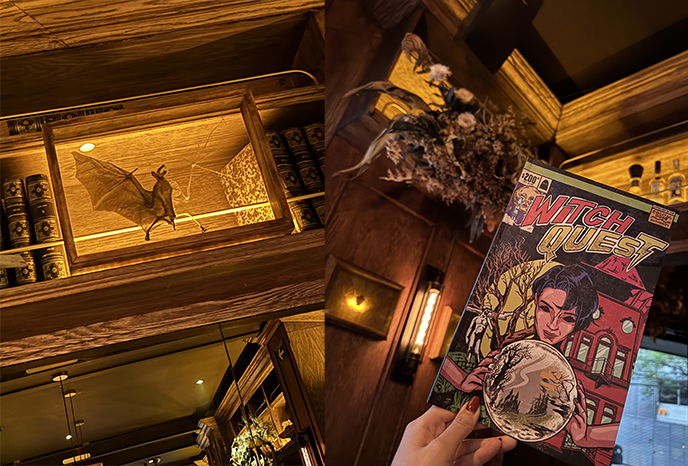
Brujas’ menu is cleverly desighed like a Witch Quest comic book, filled with stories of witchy women that have become feminist icons. I took an English version one home along with a ghostly pin.
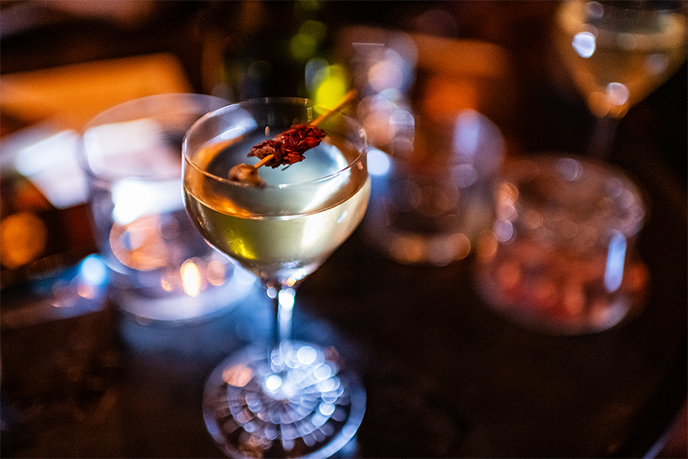
La Matlazihua is a grasshopper martini with mezcal, chamomile liqueur and a dried, edible chapulin insect on top. (I love eating bugs in Mexican cuisine.)

My fav cocktail was the Reina Vara with passionfruit, herbal liqueur, tequila and an edible paper butterfly on the side.

Loved bonding with Las Brujas’ witches — they can recognize one of their own!

Another Mexico City fav is Long Story Short, a hip kitchen, wine and cocktail bar. The music mix, friendly young staff / crowd and mixology inspired by songs and musicians are irresistible.

Also on North America’s 50 Best bars – Tlecan, which resembles an Aztec tomb with hell lighting and a smiling giant skull altar! Tlecan’s bartenders dramatically prepare drinks like a Pulque Colada and others centered on artisanal mezcal and traditional Mexican spirits.
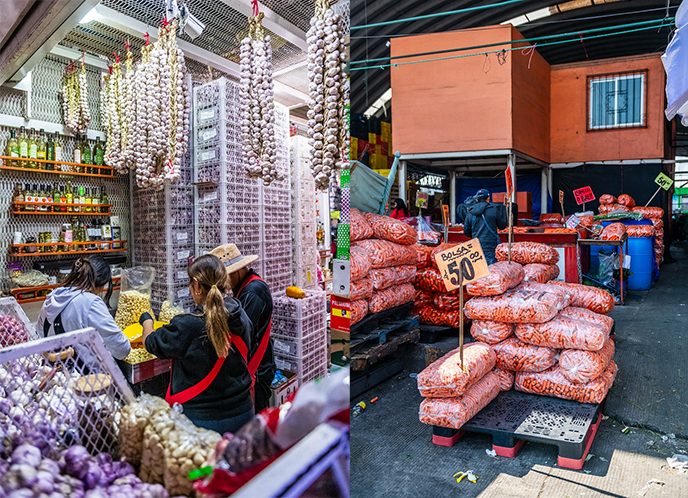
To get a better understanding of why Mexico City’s food scene rocks, I visited Central de Abasto, the largest wholesale market in the world. (Rey Lopez took these images and the dining ones further down.)
The piles of fresh produce are a wonder to behold… This garlic store looks like it’s ready to face Dracula, while the carrot seller is prepared to feed Bunnicula!
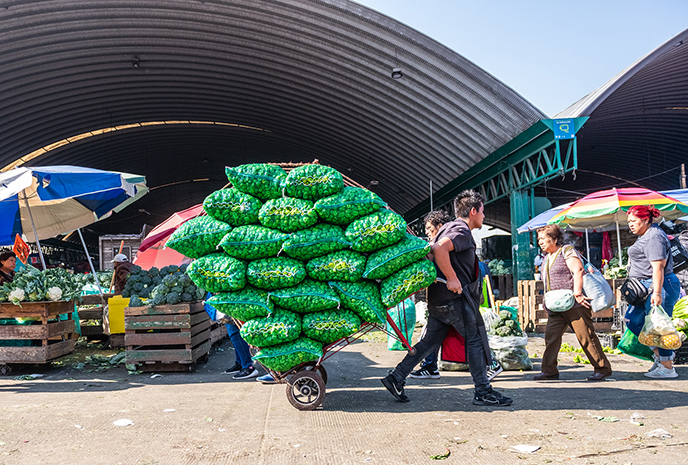
Look out for “little devils” running around the enormous market with hand-pulled carts piled with goods. They’re called diablitos for their seemingly supernatural carrying capacity, as well as the horn-like design of the handcarts.
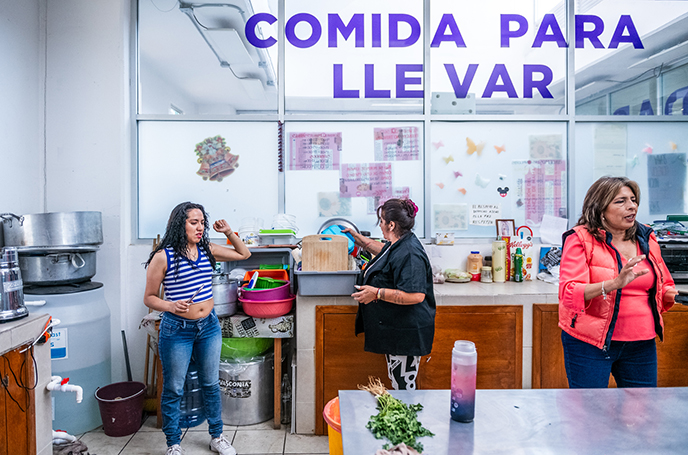
The market’s district, Iztapalapa, is being revitalized thanks to Utopias community centers. They’re doing incredible work to support locals through recreation programs, healthcare, community kitchens and more.
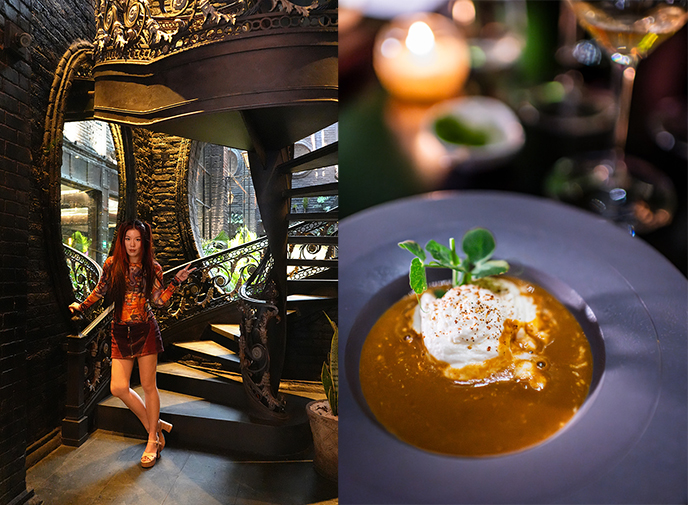
Now, let’s eat… Fonico is straight out of a Tim Burton movie, set in a dark manor with a winding deco staircase!
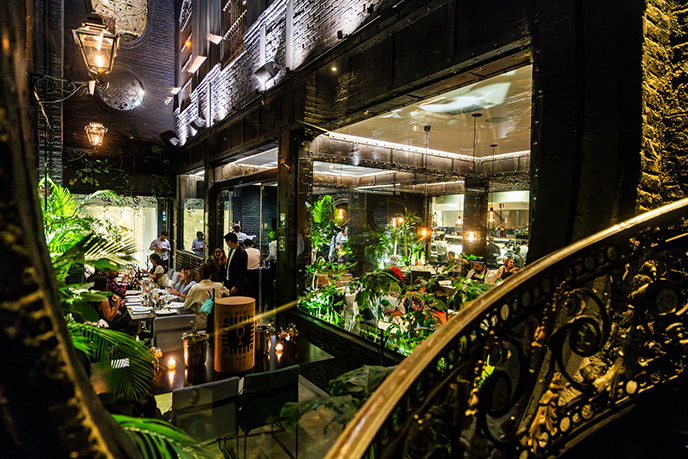
In this dramatic space, the modern Mexican restaurant serves bright dishes centered on sustainable fish and seafood, and local produce sourced from Central de Abastos market.
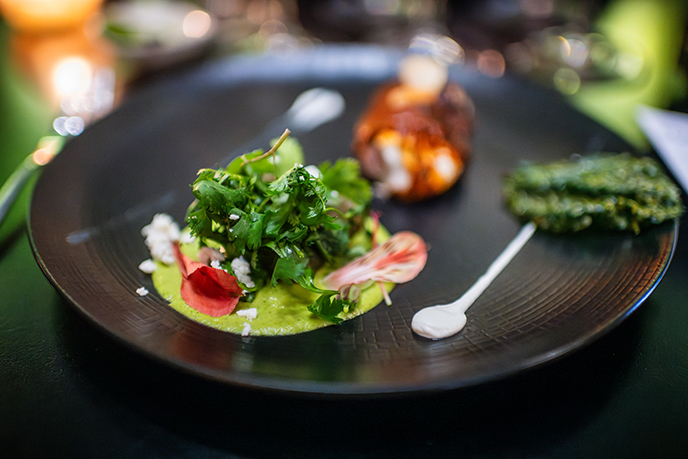
We enjoyed Fonico’s tasting menu with seasonal vegetables and Mexican flavors, paired with Mexican wines (sommelier Laura Santader walked us through a tasting before the dinner; my favs were from Baja wine country.)
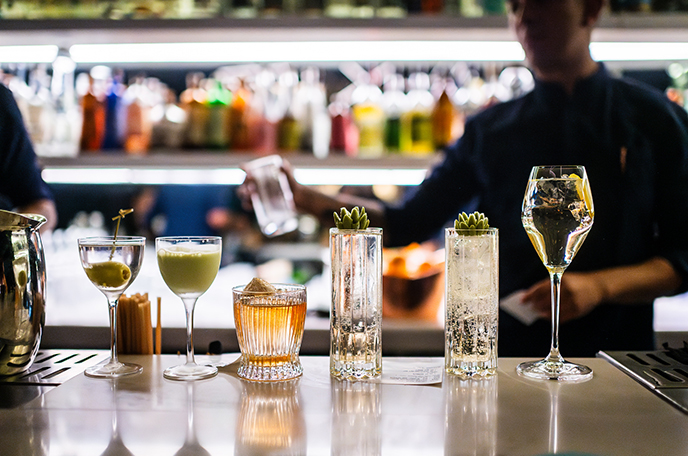
Upstairs is Rayo, another example of Mexico City’s fabulous bar scene. We got to try 10 tinctures from a wooden box to help us choose a drink from their “Mexico Through the Senses” cocktail menu.

On another evening, we dined with Michelin starred chef Oswaldo Oliva at Lorea in Roma Norte — set in a sleek, multi-level space with an open kitchen.

Oliva’s ever-changing menu is inspired by his weekly visits to Central market, as well as his experiences cooking throughout Spain. He makes blue corn tortillas by hand on a traditional grill by the kitchen.

I became a fan of huitlacoche (blue-grey corn fungus with a mushroomy taste), which he served on a fresh tortilla with requeson cheese.
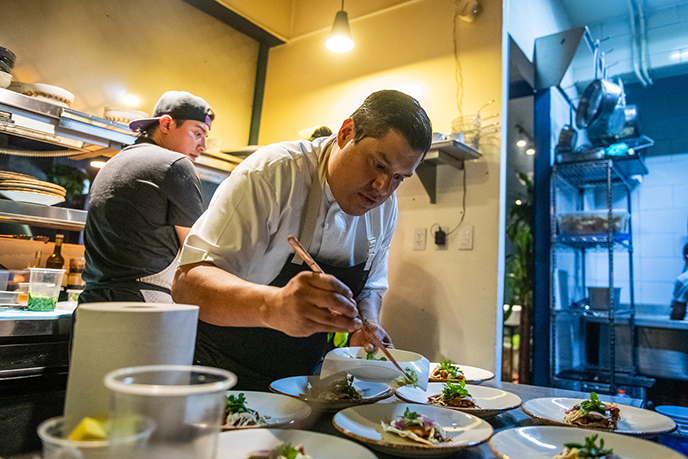
Another meal to remember: lunch at Maiz Tinto, Chef Ulises Palafox adds his creative flair to Mexican traditional cuisine, and serves his dishes with wine pairings by Brenda Palafox.
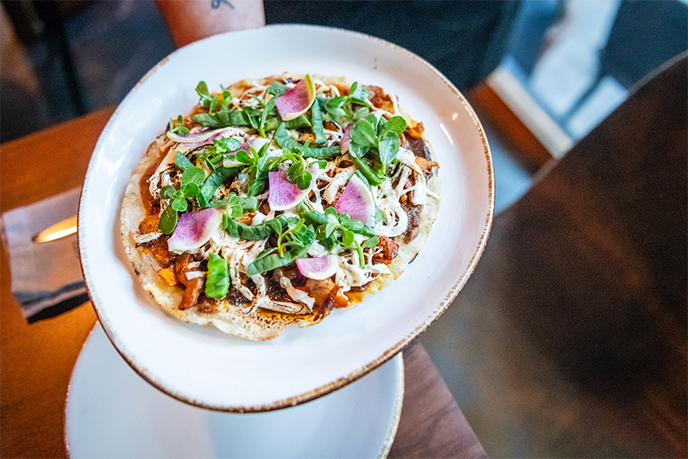
Another fav of mine: Oaxaca stringy cheese! Still thinking of this tlayuda Mexican pizza with pork belly, melted cheese, cured nopal cactus and radish — paired with Valle de Guadalupe Cabernet Sauvignon and Nebbiolo.
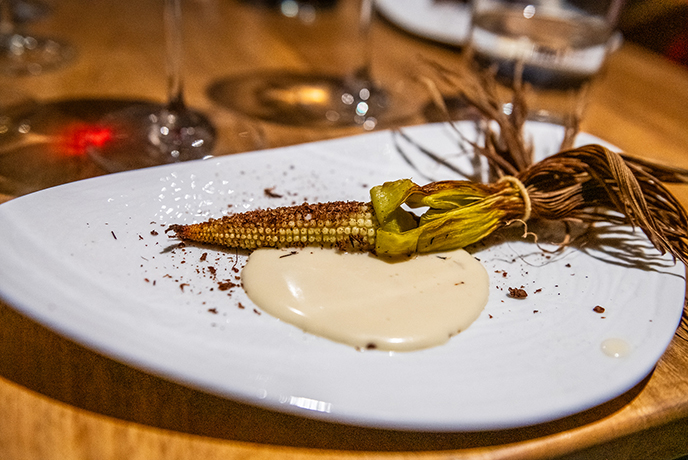
At Barolo, local ingredients get an Italian twist like this in-season baby corn with a smear of Taleggio cheese and a dusting of grasshopper powder, paired with bold Italian wines like the namesake Barolo.
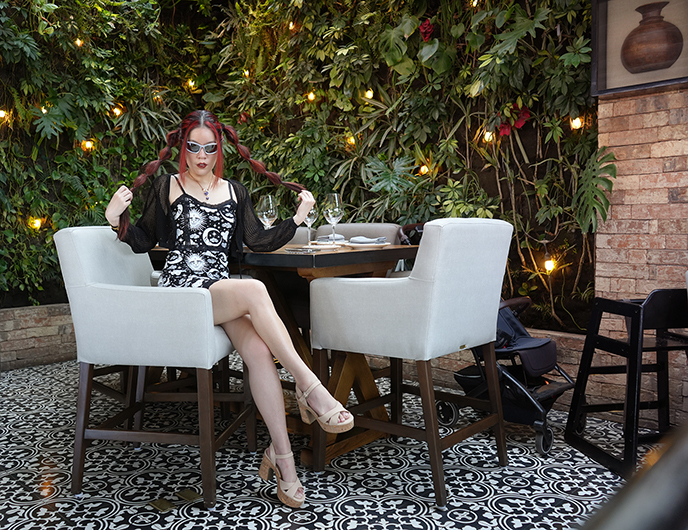
You don’t need to twist my leg to get me back to Balcon del Zocalo, the dazzlingly creative restaurant with a balcony atop Zócalo Central Hotel. Every few months, chef Pepe Salinas creates set menus based on themes like climate collapse and feminist icons — you can read my Observer article and blog from last year about the restaurant.
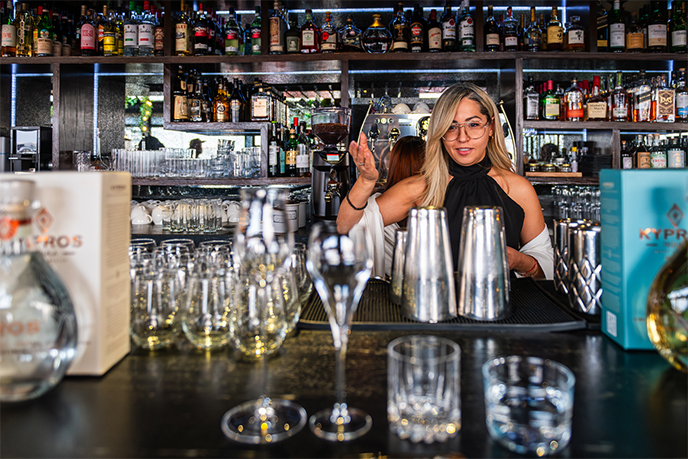
We first sat at the bar to sample Kypros Tequila — you know that mezcal and tequila are my liqueurs of choice, so I was happy to discover this women-run artisan label. Kypros Tequila’s agaves come from Jalisco, where they are grown organically and with care.
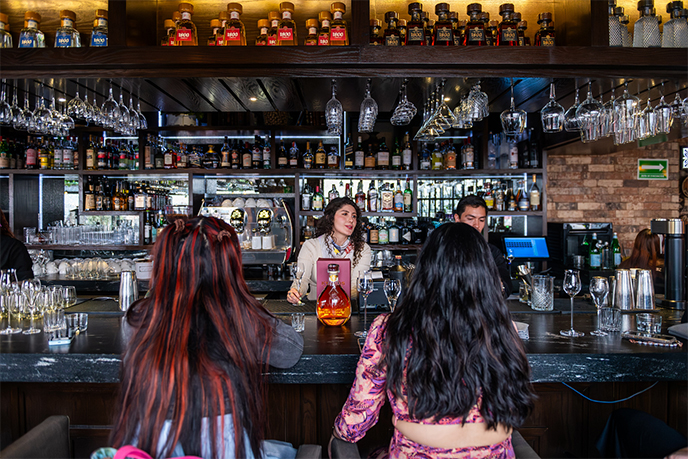
Kypros stands out from the pack thanks to its meticulous distillation process. The organic, 100% blue agave undergoes double distillation through copper pipes, and is aged in French and American oak barrels for herbal, floral notes. I couldn’t pick a favorite between the white, reposado, and anejo — all in elegant bottles inspired by ancient Greece! (More on the Kypros Tequila site.)
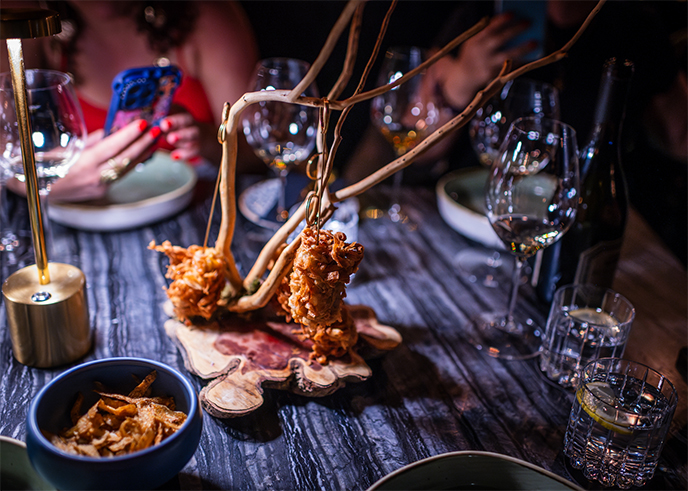
We sat down to Chef Pepe Salinas’ latest degustation menu, which celebrates 10 years of Balcón del Zócalo. As always, his dishes are visual and gastronomic bangers: this Metamorphosis dish turns peach and manchamanteles (Mexican stew) into hanging “chrysalids” that represent the work and training that lead to blossoming like a butterfly.
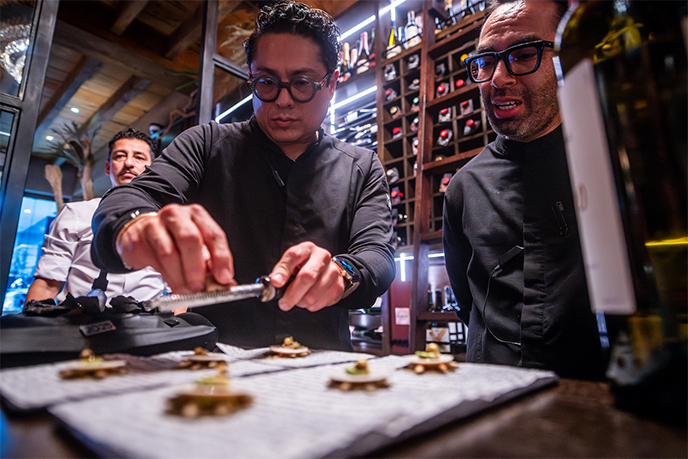
The interactive dining experience involves the first bites in the wine vault, as well as visits to the kitchen and his “mad scientist” brainstorming room filled with experimental potions in skull-shaped jars and corkboards tacked with drawings.
(Thank you to Rey Lopez for the food/restaurant images.)
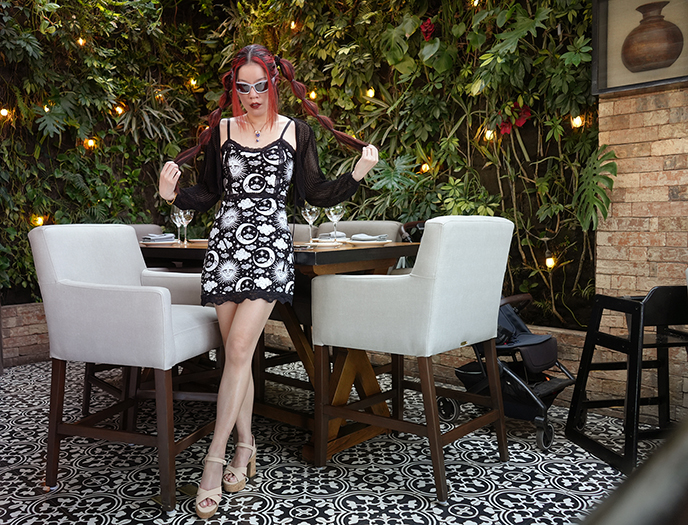
As always, Balcon del Zocalo delivered a dinner to remember — you must book the seasonal tasting menu if you come to Mexico City.
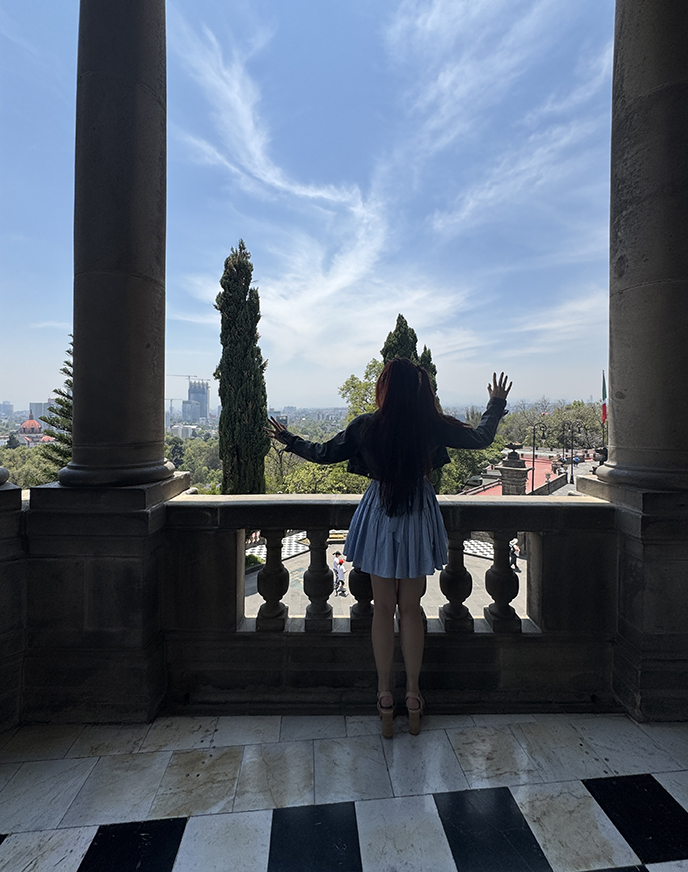
I had some time to explore other CDMX culture / history landmarks during my trip. Looks like Mexico City has a new queen… I was feeling right at home at Chapultepec Castle!
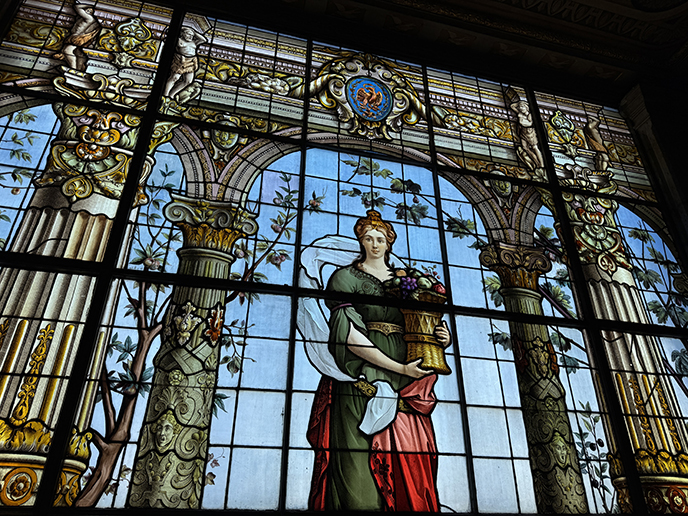
The decadent 18th century Castillo de Chapultepec sits on a hill that was once a sacred Aztec spot, and was the only North American castle inhabited by royals.
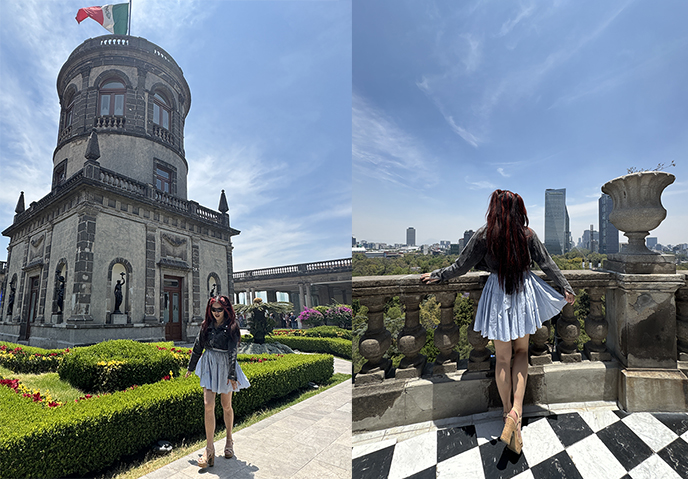
If you’re in CDMX, visit the castle and museum to bask in the neo-Gothic/romantic/classical art and architecture. Tip: dress up and get some shots on the balcony overlooking the capital.
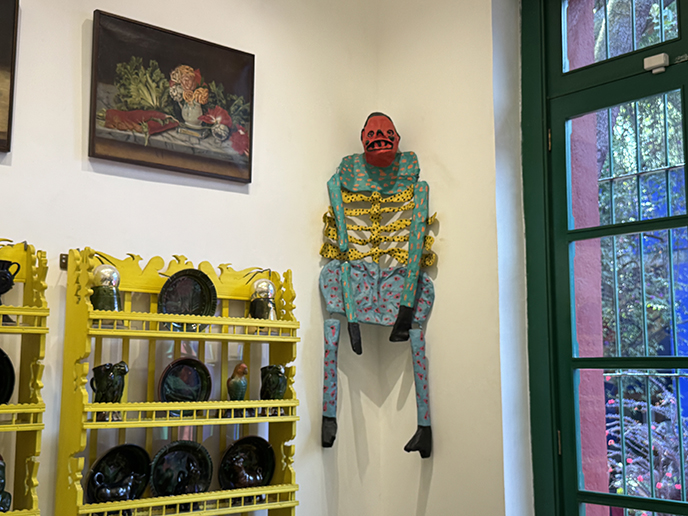
I also went to the iconic Frida Kahlo Museum in Coyoacan. The Mexican painter, perhaps best known for her self-portraits, spent most of her life in this charming blue-walled house.
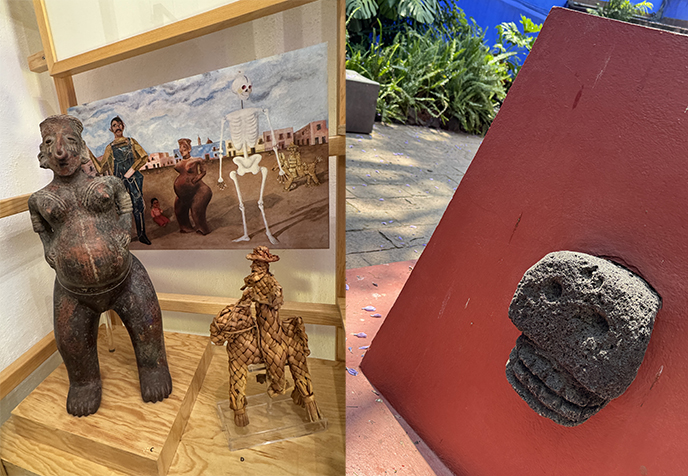
It was delightful to get a glimpse of Frida Kahlo’s childhood and artistic development. Many of her works had references to her health issues and chronic pain, such as this skeleton. The home also displayed the favorite artifacts of Frida and her husband Diego Rivera, such as this grinning rictus.

Speaking of skeletons… they’re everywhere in Mexico City! At the nearby Coyoacan market, you can pick up skull and demon art pieces done in the traditional style.
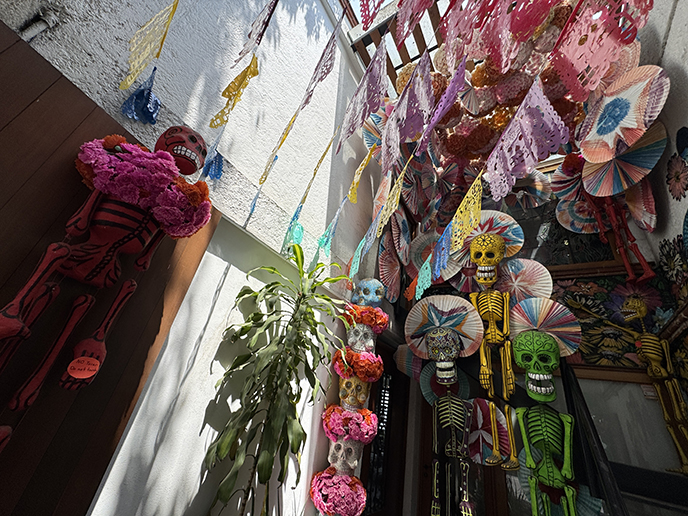
The smiling skulls and bright colors are a nod to Mexico’s positive view of death and the afterlife. Rather than being something to be feared, death is celebrated as a natural part of life and ancestors are honored and remembered – especially at the start of November for Day of the Dead.
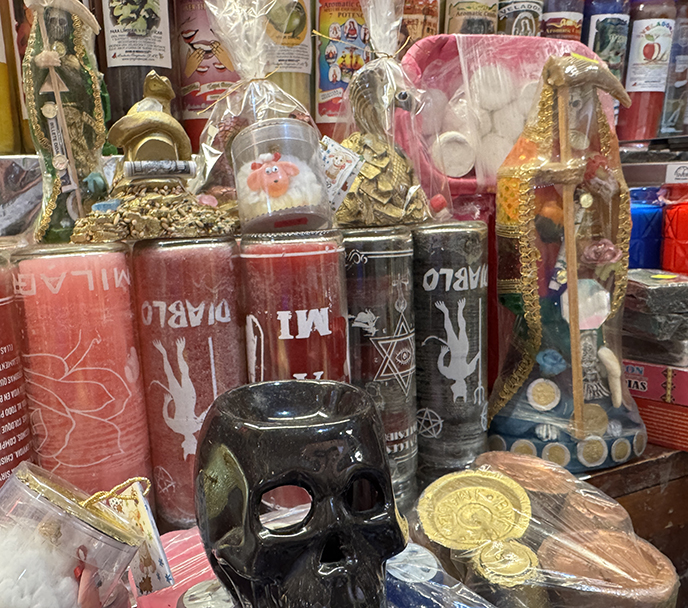
El Diablo is present in the culture as well. Representations of the devil tend to have syncretic influences, and emphasize the duality of good and evil.

With smiling horned Satanic skulls like this, Hell looks like a party!
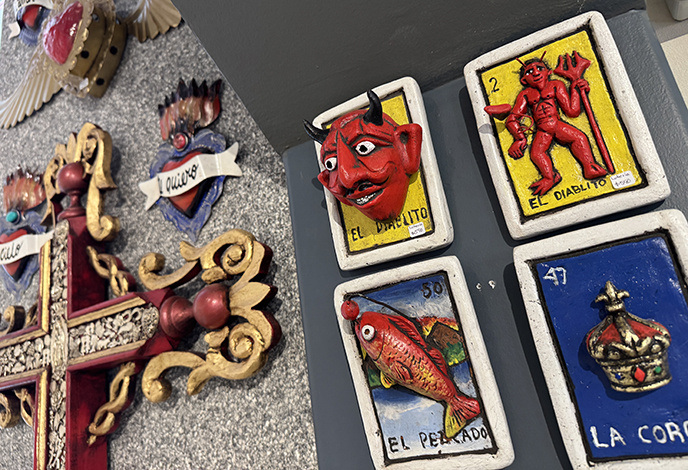
CDMX is one of my favorite cities to shop for handmade, local art. Stroll around La Condesa and pop into the artisan boutiques — I took home a curving candle and Puebla coffee beans.
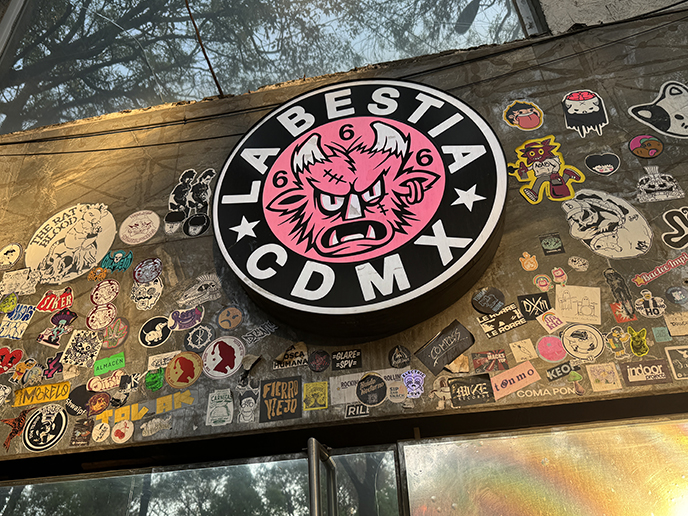
The Mark of the Beast covers a local radio station as well.
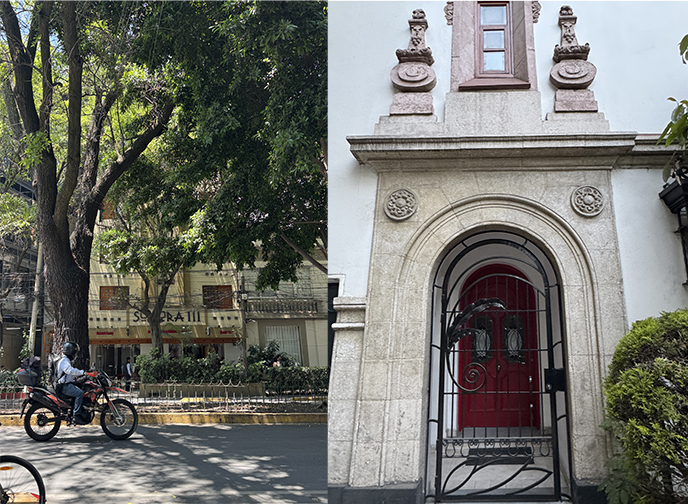
I recommend getting an Airbnb in La Condesa, my favorite district. It’s laid-back and full of greenery, healthy cafes, hip bars and restaurants, and Art Deco and Art Nouveau facades.
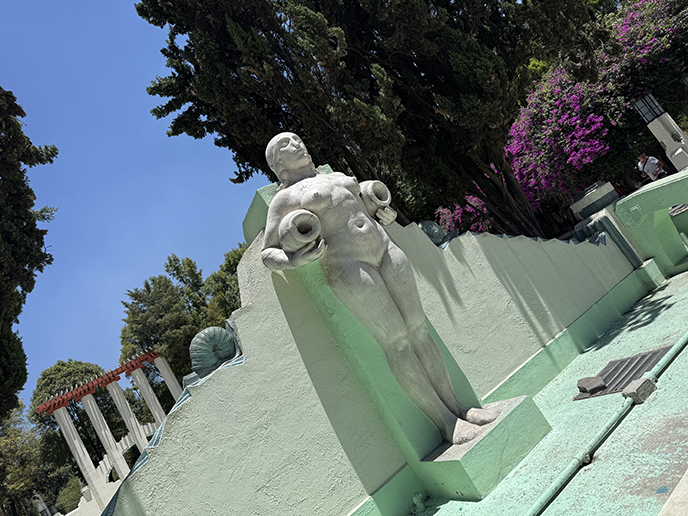
Head to Parque México and say hi to Fuente de los Cántaros, this 1929 Art Deco fountain of an Indigenous woman.
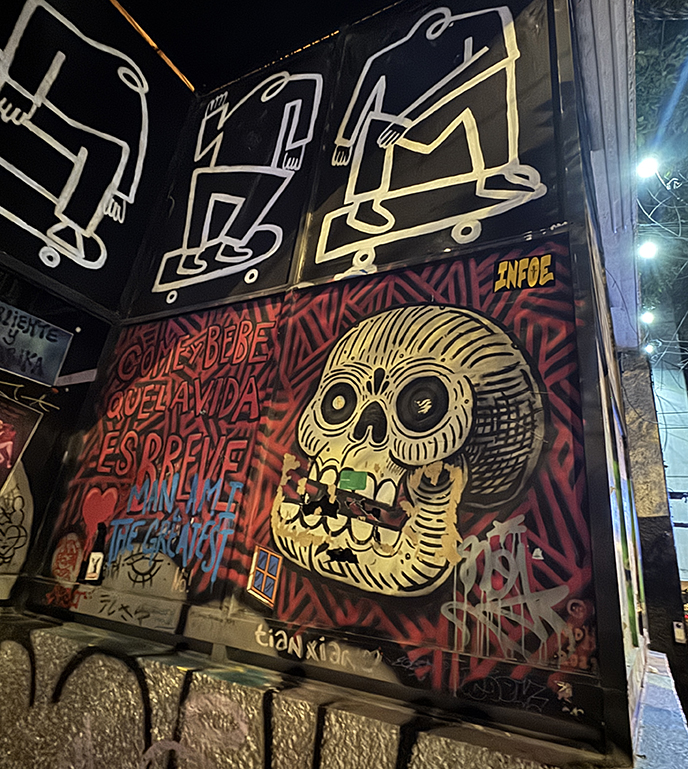
With innovative dining, witch cocktail bars, underworld museums, and skulls everywhere — Mexico City is my type of Goth destination! For more travel tips, see all my Mexico blogs here and check out additional recommendations, reels and images on @lacarmina IG.
SHARE & COMMENT

 LA CARMINA
LA CARMINA







2 Comments
Very nice blog post, always a pleasure reading. Love your fashion, specifically the cute litte outfit with the Y2k star shorts it’s really cute. That master suite looks so relaxing that plush bed is amazing and i’d love to crash there with you it’s so nice.
Cheers, Nikki! It was a dream suite for sure – could hold so many people!